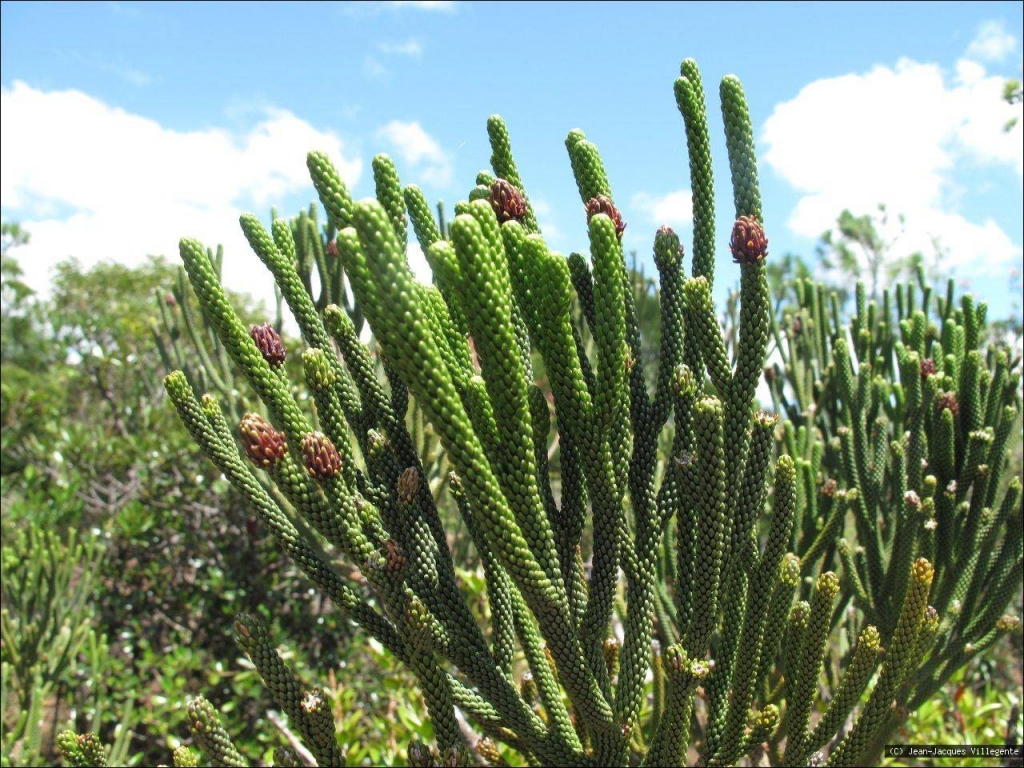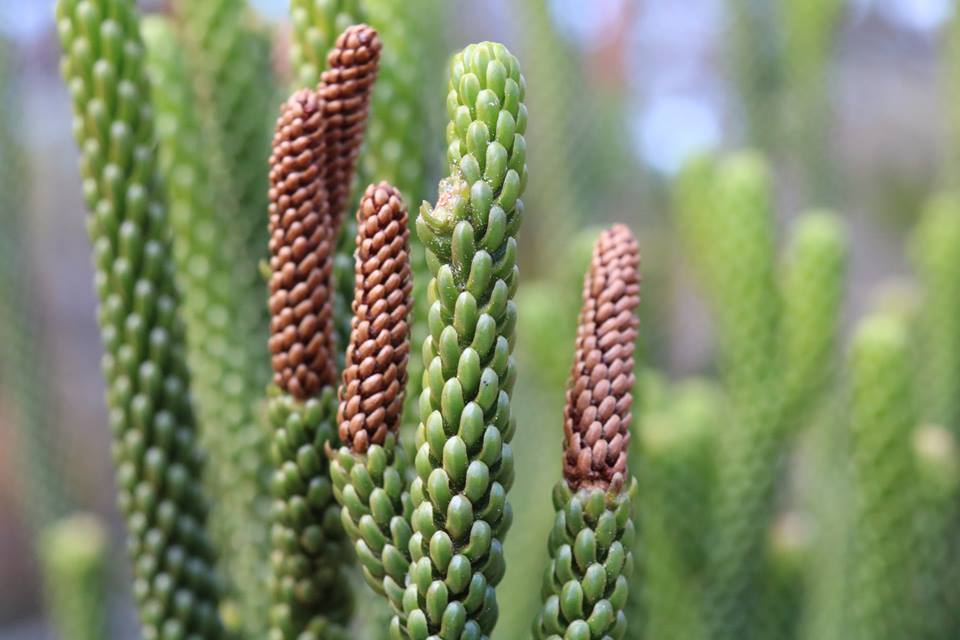Dacrydium araucarioides, first described in 1866 by Brongniart et Grisebach, is commonly known as Candelabra Rimu. Synonyms for this species include Podocarpus araucarioides and Dacrydium arthrotaxoides. The scientific name illustrates this species' similarity to the species, Araucaria.
Description. Candelabra Rimu is an evergreen coniferous species of tree that grows to mature heights of 10 to 20 feet (3 - 6 m) tall.
- Bark is thick, scaly, rough, dark brown in color, and slightly fibrous inside, more or less smooth outside, with occasional lenticels on young trees, becoming gray with age.
- Branches are spreading and open, later rising in a candelabra form.
- Branchlets are short, thick, and cylindrical.
- Juvenile foliage is needle-like, dense, and curved, and about 0.5 inch (12 mm) long.
- Transitional foliage is short and thick, around 0.25 inch (5 - 7 mm) long and very similar to the adult leaves of Dacrydium balansae, but a little bit longer.
- Adult foliage develops gradually from the transitional leaves, it scale-like in structure, linear-oblong shaped, about 0.1 to 0.2 inch (3 - 5 mm) long and 0.05 inches (1 - 1.4 mm) wide, densely overlapping in many rows, rigid, strongly curved, keeled beneath, blunt at the apex.
- Pollen cones grow on terminal shoots, often on short, lateral shoots, or laterally just below a terminal pollen cone. They are cylindrical, 0.25 to 0.7 inch (9 - 18 mm) long and 0.12 inch (2.5 - 3 mm) in wide.
- Seed cones are also terminal terminal on short branches whose leaves are about 0.12 inch (3 mm) long and strongly curved.
Distribution. This species is native only to the island of New Caledonia. It is locally a dominant species in the vegetation on serpentine soils on the southern half of the main island from sea level to 3,700 feet (1,150 m) above sea level.



